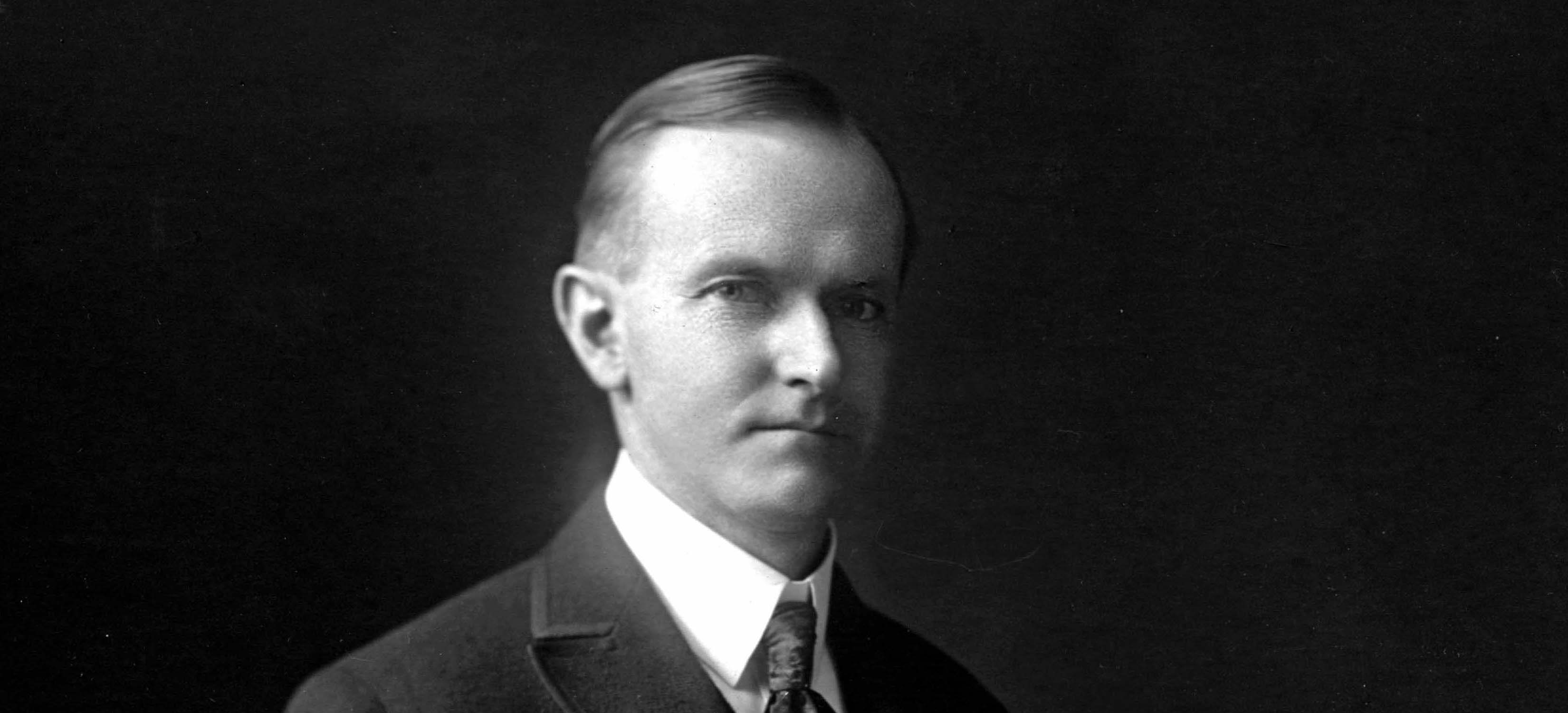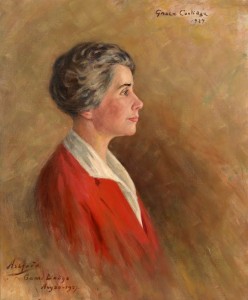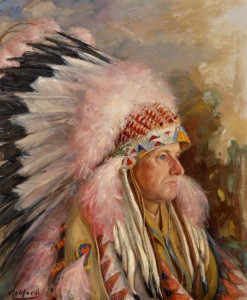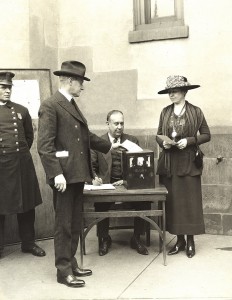
-
Columbus Day
Measured by its effect on all following history, the voyage of Columbus, ending in the discovery of a new hemisphere, was an achievement of the first magnitude. Possibly others preceded him, but he was the first who made known the existence of America to European civilization.
From “Calvin Coolidge Says”, October 11, 1930
-
Election Day
Elections are the most serious business in which our citizens engage. On their results depends not only the welfare of the people but the demonstration of their ability to govern themselves with safety and justice to each other. The greatest peace-time test of the moral power of a people is the ability to cast a disinterested, unselfish and patriotic vote. At the present time the country needs the most conscientious thought it can give in choosing officers. Only such decision is worthy of a free people.
from “Calvin Coolidge Says”, September 29, 1930
-
Frank Ashford

In 1927, President and Mrs. Coolidge had a busy summer in Rapid City, South Dakota, a part of the country unfamiliar to both of these Vermont natives. It was here that he received a Native-American warrior’s headdress now displayed at the Calvin Coolidge Presidential Library and Museum (CCPLM). Coolidge was president in 1924 when citizenship was granted to all of the native population. A local Boy Scout troop presented him
with a cowboy outfit complete with hat and chaps. In early August, the president delivered his famous one line news release that startled the nation by saying, “I do not choose to run for president in 1928.”
Lesser known today is that Frank Clifford Ashford painted two portraits of President Coolidge and two portraits of Grace Coolidge that summer at the State Lodge in Custer State Park where they resided. Two of the artworks hang at the CCPLM, one of the president in the Native-American headdress and the other, a profile of the first lady in a red dress. The other two works remain hanging at the lodge where they were originally painted. In those, the couple is in more formal dress.
Ashford, born in Iowa, worked as a farm hand on his father’s farm in Rondell, Brown County, SD as late as 1900. During the next three decades, he worked as an artist in Paris and New York where he studied, exhibited and is known to have painted landscapes as well as portraits. In New York, he was a student of William Merritt Chase.
After Ashford’s works were exhibited in the Salon of the Societe des Artistes Francais in 1912, and both at the Chicago Art Institute and the Pennsylvania Academy of Fine Art in 1913, he showed a painting titled “Marjorie” at the National Academy of Design in 1920. The latter may have been a portrait of his wife, Marjorie Rickel, whom he married in South Dakota in 1918 and divorced by the time of the US Census in 1930.
From 1930 until his death in 1960, he resided and worked primarily in South Dakota.
-
Congratulations to Class of 2011!
Congratulations to the Class of 2011!
“This month will turn out into the world many thousands of young men and young women with college diplomas… They could not have been graduated without subjecting themselves to a great deal of severe mental discipline… One great of a college education is a better appreciation of the real values of life.”
From “Calvin Coolidge Says” a syndicated newspaper column June 6, 1931
The Calvin Coolidge Presidential Library & Museum employs work-study students from nearby Smith College. Congratulations to our graduates Veronica Tjioe who worked here 5 semesters and Beans Velocci who worked here 3 semesters! These amazing future historians, along with Sophie Glidden-Lyon ’12 (who will return in the Fall for her 7th and final semester here) have been the behind the scenes magic that assist the one paid staff with research, creating exhibits, processing, re-housing, indexing, scanning, adding to the collections database and more!
-
Women’s Suffrage
 Today marks the 90th anniversary of the 19th Amendment giving women the right to vote. Grace Coolidge cast her first vote in a Federal election on November 2, 1920 with her husband on the ballot for the Vice-President of the United States. In the photo above is Massachusetts Governor Calvin Coolidge and Grace voting in Northampton in 1920.In 1930, Calvin Coolidge reflected on women’s first decade of voting: “They are devoted, steadfast, sensible. They will not follow radical proposals, but will be influenced by moral values. Nothing can be safer for the commonwealth than the informed judgment of the mothers of the land.”Calvin Coolidge Says October 13, 1930
Today marks the 90th anniversary of the 19th Amendment giving women the right to vote. Grace Coolidge cast her first vote in a Federal election on November 2, 1920 with her husband on the ballot for the Vice-President of the United States. In the photo above is Massachusetts Governor Calvin Coolidge and Grace voting in Northampton in 1920.In 1930, Calvin Coolidge reflected on women’s first decade of voting: “They are devoted, steadfast, sensible. They will not follow radical proposals, but will be influenced by moral values. Nothing can be safer for the commonwealth than the informed judgment of the mothers of the land.”Calvin Coolidge Says October 13, 1930 -
Happy Father’s Day!
“I think only two or three fathers have seen their sons chosen to be President of the United States. I am sure I came to it largely by your bringing up and your example.”
Letter to his father, John C. Coolidge, August 2, 1925
-
Happy Flag Day!
“The stars and the red, white and blue colors have a significance of their own, but when combined and arranged into the flag of our nation they take on a new significance which no other form or color can convey… It represents our peace and security, our civil and political liberty, our freedom of religious worship, our family, our friends, our home. We see in it the great multitude of blessings, of rights and privileges, that make up our country.
But when we look at our flag and behold it emblazoned with all our rights we must remember that it is equally a symbol of our duties. Every glory that we associate with it is the result of duty done. A yearly contemplation of the meaning of our flag strengthens and purifies the national conscience.”
From “Calvin Coolidge Says” a syndicated newspaper column June 12, 1931
-
Northampton Republican Committee
The Coolidge Museum will host the next meeting of the Northampton Republican Committee on March 10, 2010 at 7pm. The Committee will be introducing their constituents to Republican Tom Wesley, who is running for Congress.
For more information contact Coolidge@forbeslibrary.org.
-
VOTE!!
January 19 is a special election in Massachusetts for the late Ted Kennedy’s Senate seat. The nation is watching Massachusetts as the race heats up and is expected to be very close. Citizens have been flooded with robo calls, emails and television commercials, all strage concepts to Calvin Coolidge. As you debate your vote and head to the polls, remember the words of Coolidge “We have a tendency to be too indifferent before primaries and elections and too critical after. Public officers can and do exercise large influence over our daily life but the main course of events is in our own hands.” From a November 4, 1930 newspaper column
-
Memorial tribute to Coolidge by Henry P. Field
Calvin Coolidge died at his home, “The Beeches” in Northampton on January 5, 1933. Upon Coolidge’s death, The Daily Hampshire Gazette published this tribute to Coolidge from Henry P. Field on January 7, 1933. Calvin Coolidge studied law in the Office of Hammond & Field 1895-1897. Henry P. Field, lawyer, Mayor of Northampton, Judge, Forbes Library Trustee, was a great influence in Calvin’s legal and political career.
“This American nation and peoples beyond our borders and across the seas will mourn his departure, but here at home, his home and ours, his death comes as a grievous personal loss. We all knew his fine character, his kindness and consideration for others, his exceptional abilities, his genius for government, his strong common sense, his keen sense of humor. We all knew that he had the courage and perseverance of his Puritan ancestors and their firm and abiding faith. And we also knew how unpretentious he was, how eager to avoid all display. And yet this quiet, unostentatious friend and fellow citizen of ours retired from the Presidency the most highly esteemed and most popular man in all these United States, and in doing so he was passed from this world into a better one. He filled all his many public offices to the entire satisfaction of the people. They trusted him. They felt that in his hands their government was safe. His life has been of infinite value to this country and the nation knows the seriousness of its loss. But to us at home the loss is more intimate. In all the long history of this good city he was its most distinguished citizen, and here in his home town he made life better and finer for every one who came within his influence.”



